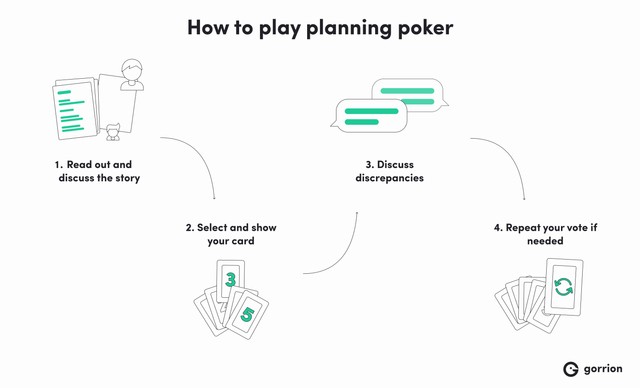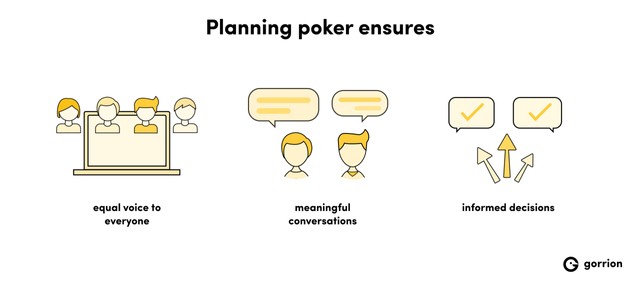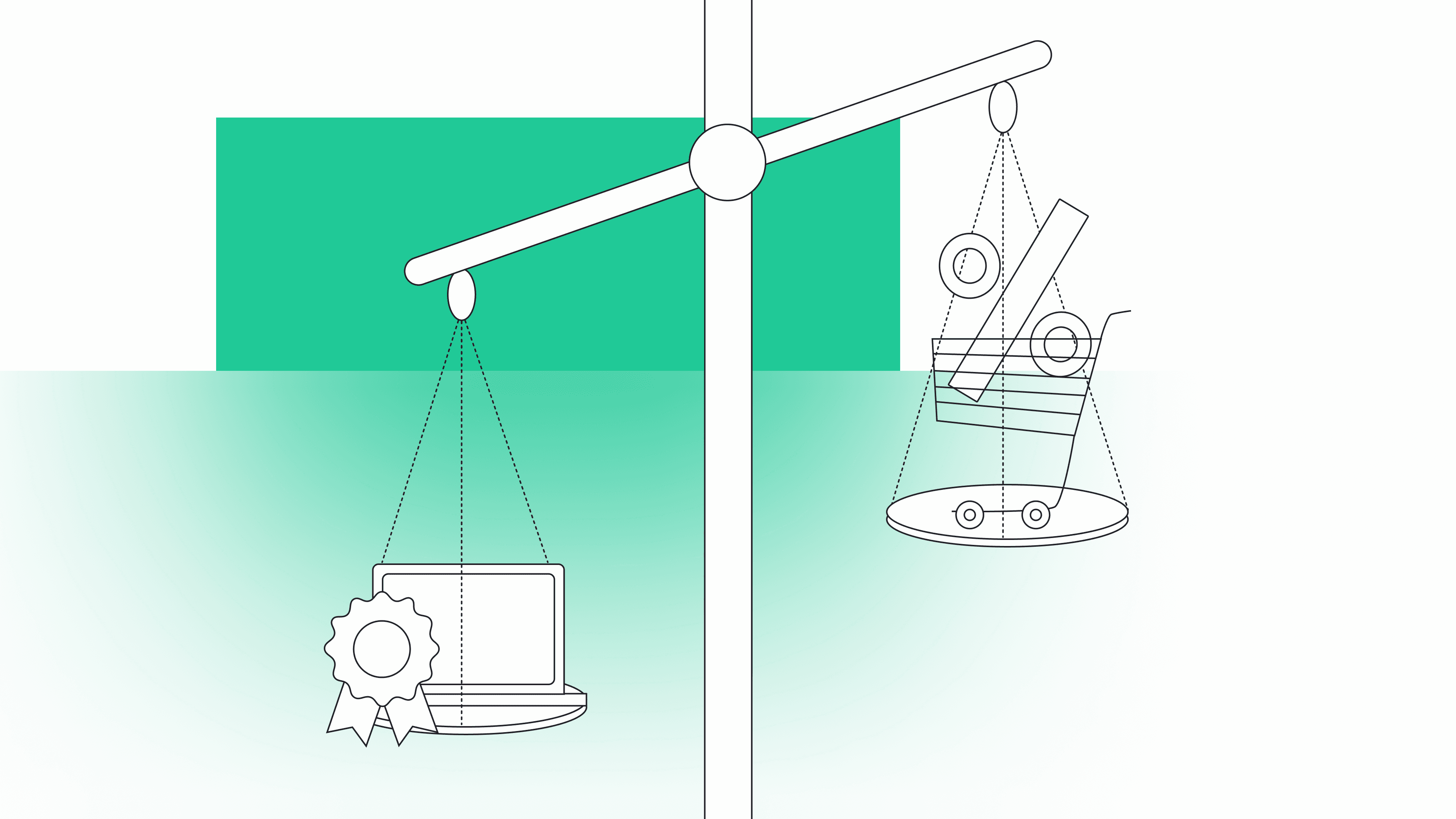


Online planning poker – how to estimate your projects better
If your team’s ever got stuck trying to estimate a project in Scrum or if you repeatedly find yourself spending an eternity discussing your estimates, then planning poker might be just the tool that you need. It’s also something you should consider if you see that not everyone on your Agile team has equal vote or that your team estimates are widely off the mark.
What’s planning poker
Sometimes referred to as “scrum poker” or “pointing poker,” planning poker is a way to collaboratively estimate task effort in Agile methodologies using gamified methods – specifically, playing cards. The quickest way to describe the process is that team members decide how much time, in their opinion, a task will take to complete, using cards to do that.
The goal is to give everyone an equal chance to participate in the decision making, simultaneously reducing the amount of time it takes to arrive at a compromise. And because it’s poker, you know it will be fun.
How planning poker works
Before you can play planning poker – online or offline – you need to get everyone onboard first. So, start by having the scrum master explaining how it works and why it’s useful (or, you know, just send them this article 😉). Then agree on how you want to evaluate tasks and what the story points mean. Do they signify time needed to complete the task (and if so, is it hours or days)? Complexity of the task? Or perhaps the risk involved? Everyone needs to be on the same page before you can begin.


Have a project in mind?
Let’s meet - book a free consultation and we’ll get back to you within 24 hrs.
On a technical side, what you need is, of course, a product backlog on which you’re going to work and which contains all the user stories. You also need planning poker cards that you’ll distribute among team memebers. If you’re team is remote, then you’ll need an online poker planning tool – go to the end of this article to see your options. If you have all that, you’re ready to go!
Method
- When you have everything ready, the first step is to read out and discuss the first of the user stories, so that the team can familiarise itself with it.
Your software development team should discuss how they will approach the issue and what technologies they’ll use, how many people should be involved and what competences they need, what are the potential obstacles they can come across, etc. - In step two, team members select and show their cards simultaneously.
Once all questions have been answered, the team members can make an informed guess as to how many story points it will take. They should select a corresponding card on their own and wait for the instruction to show it. Everyone shows their card at the same time, so as not influence others. - If there’s disagreement, the team discusses their points of view.
It’s very likely that there will be some dissent and the estimates will vary significantly. That’s what the game is for! The “outliers,” i.e. people who voted differently than the majority, can provide their reasoning for choosing a particular value, and the whole team can discuss their perspectives. - Then, the team takes another vote.
Usually, having heard all perspectives, the team will come to a consensus after the second vote. Mind you, it’s entirely possible that the minority can sway the vote in their favour. The goal is not to “have it your own way,” but to arrive at a consensus-based decision. If, after the second vote, there’s still dissent, you “rinse and repeat.” The team discusses the moot point and takes another vote. However, it may happen that this vote, too, will be inconclusive. In that case, the scrum master should consider if the team should play ad nauseam and force a conclusion; to take the average story points and use them as the estimate; or if you want to shelve the problem for later. It’s good to agree on a number of consecutive votes that the team can take before they adjourn and also on the next steps they should take in such case. For example, you may agree that the product owner should come back with more data that will better inform the team’s decision. - Once everyone chose the same number the game is over and you have your estimate. You can move on to discuss the next user story.
Cards
In order to conduct a scrum poker you need a special deck of cards. Of course, when doing online planning poker, the deck will be virtual. It will contain several identical sets of numbered cards. The numbering may vary, depending on your voting system. Some examples include:
- Fibonacci (1, 2, 3, 5, 8, etc.) or modified Fibonacci system (1, 2, 3, 5, 8, 13, 20, 40, etc.) – this is the “original” scoring system proposed by Mike Cohn who popularized the method;
- power of two (1, 2, 4, 8, 16, etc.) – points escalate by 2 to n-th power;
- T-shirt (S, M, L, etc.) – you compare the scope of the task to a T-shirt size.
Planning poker works best if the increments in story points are significant (like with 8, then 13, then 20, then 40). This makes it easier to find a ball-park and see the difference in perspectives. If the values were sequential (1, 2, 3, 4, 5, 6, etc.), the game would become extremely tedious, and it would take forever to arrive at a compromise.
Who participates
Scrum poker is a tool used by Agile teams, so everyone on the team should participate. If you work within the Scrum framework, then the participants should include: the product owner, scrum master, and the scrum team.
When to use it
If you decide to implement planning poker in your methodology, then you should use it whenever you want to tackle a new user story. For Scrum-based teams, that would be during a sprint planning session or in their refinement sessions.
Obviously, if you have a new project and are only creating your backlog, then you can estimate all the tasks in advance. This will help you scope the entire project and plan it accordingly.
Benefits of planning poker
So why was planning poker first created and how can it help you run a better team? There are multiple benefits that made this technique so popular. Here are some of them.
It invites meaningful conversations
The originator of the idea, James Greening, said that “planning poker was initially solving the problem of people in agreement talking too much and dominating the effort.” The cards allow you to quickly gauge who’s in agreement and who’s not, with almost zero words being said. Only when you see there’s disagreement, do you need to investigate the reasons. Still, even then, the team only discusses their differences.
Everyone gets heard
At the same time, even though you reduce the amount of talk, everyone gets to share their perspective. It would be easy for everyone to just throw a number and for the team to run with the majority. But that’s not the case. If someone has a different perspective, they get to share it. Perhaps they shine a light on a problem that no one else thought of. Or, conversely, they know of a better and faster way to resolve some problem, so their estimates are lower. The forced unanimity of the vote requires all sides to both present their view, but also to adjust it based on the feedback.
Decisions are informed
Because differences are discussed, final decisions are informed. For some team members it might be hard to estimate how many story points a task will take – for example if they are juniors, or simply new to the project. But it doesn’t mean they should not be involved in the process, or that someone should make the decision for them. Discussion educates juniors, so they can make better decisions in the future. At the same time, it diminishes the risk of them making a mistake in their estimates. Planning poker strikes a balance between democratic and meritocratic choice.
Planning poker online
With the increasing popularity of flexible and remote work, more and more teams are looking for online planning poker tools. Luckily, there’s a number of options to choose from.
Improvised solutions
Some scrappy teams make do with the tools they have at hand. You’re using Miro? Great, there’s a planning poker app on their marketplace. Figma? You can find planning poker decks on their community page. Some teams simply vote using chat during their video calls. That’s a pretty rudimentary form of planning poker as it misses the element of revealing the cards simultaneously. But hey – if it works for you, keep it!
Jira planning poker
If you’re using project management tools (which you probably are, if you’re Agile), then you will naturally look for solutions that can be easily integrated into them. Folks that use Jira are lucky in that regard, as there are a few plugins they can choose from. Others, not so much. Our team at Gorrion uses ClickUp and while we love working with it, it’s one of the tools that don’t have a planning poker extension.
Gorrion’s planning poker
Which is why we developed our own app for that! At poker.gorrion.io you can launch your own game of planning poker online – for free, no registration needed! It’s a neat little app created by our interns that has everything you need to run your next planning session. You can choose from a variety of voting systems, import tasks from a CSV file, set a voting timer, see voting history, and even invite spectators. All packed in a user-friendly minimalistic design!
So how about it? Are you ready to try planning poker with your team?


Have a project in mind?
Let’s meet - book a free consultation and we’ll get back to you within 24 hrs.
At Gorrion, Dominika Stankiewicz manages content. Having spent a decade in marketing and communications, she’s the master of the written word and the guardian of style. On our blog she shares her experience in B2B product marketing to help SaaS companies plan and execute their go-to-market strategy. In her spare time, she reviews manuscripts for publishers and bakes cakes. She loves cats, books, and American football.




